PRESERVING A MILITARY LEGACY FOR FUTURE GENERATIONS
The following Reflections represents CDR Thomas Nelson’s legacy of his military service from 1970 to 1997. If you are a Veteran, consider preserving a record of your own military service, including your memories and photographs, on Togetherweserved.com (TWS), the leading archive of living military history. The following Service Reflections is an easy-to-complete self-interview, located on your TWS Military Service Page, which enables you to remember key people and events from your military service and the impact they made on your life. Start recording your own Military Memories HERE.
Please describe who or what influenced your decision to join the Navy.

My family history certainly helped me decide. Many of my ancestors were in wars, particularly my 4th great-grandfather, who signed the Declaration of Independence and was commander general of the Virginia Military who fought in the Revolutionary War. Two grandfathers fought in the Confederacy and my grandfather in WWI.
I was a member of the Civil Air Patrol (CAP) and learned about flying. In college, I obtained a pilot’s license in a Cessna 150. I wanted to join the Air Force, but my eyesight was not good enough. The Navy recruiter told me I could go in immediately in the Navy’s navigator program and as an intelligence officer at Pensacola. I signed up and went through much of that program until I needed to go to Denver, Colorado, for intelligence training. So long story short, I loved what I saw of the military program.
I graduated from the Aviation Officer Candidate (OAC) school NAS Pensacola as an Ensign. My wife, Poppet, stayed in Pensacola while I trained. I was appointed the Liaison Officer for the next class(s). My wife and I would visit any spouse living in the area to give support. Pensacola was hard, but my training in the CAP was a great help to endure the rigorous experience, particularly the marching and attitude of discipline. The Pensacola experience confirmed my love for the military.
Whether you were in the service for several years or as a career, please describe the direction or path you took. What was your reason for leaving?

First from Pensacola to Denver, Colorado, then to VFP-63 in NAS Miramar, San Diego, and then for one 10-month tour off Vietnam. My next assignment was chosen by my detailer, who sent me to Washington, DC. The Defense Intelligence Agency (DIA) was a great assignment, other than the traffic that went along with it each day. This cemented me into Washington, DC, for a great many years.
Cutbacks from the Vietnam War resulted in a mandatory rift unless I would become part of the Regular Navy vice Reserve Navy. I tried several times to apply for Regular service, but the quota was so small I was not accepted. I joined the Reserves immediately after my Active Duty end of service occurred. I was stationed in RIA-19 at NAS Andrews, Maryland. I ended Reserve Navy after 27 years of service (Commander). I left the service when there was little chance of making CAPTAIN and was assigned to RIA-19 Staff without pay. Due to family needs, pay would have been necessary, as all my costs for service would be out of pocket, even the 2-week active duty.
If you participated in any military operations, including combat, humanitarian and peacekeeping operations, please describe those which made a lasting impact on you and, if life-changing, in what way?

I participated in CAG-30 operations off Vietnam in 1992-1993 and was aboard the USS Oriskany (CVA-34) with Detachment 4, VFP-63 (RF89G Photo Recon). We had five aircraft assigned to CAG-30 about the ship. I was the imagery senior intelligence officer (1 of 2) responsible for briefing pilots, preparing up to four rolls of film per flight for duplicating, debriefing pilots, plotting the flight’s course on 1:250,000 JOG sheets, analysis of the film for enemy activities or bomb damage assessment, and one hand-written report submitted to the communication room for sending out via coms. The ship primarily was in the northern and mid areas of the Gulf of Tonkin. Serving my country was important to me when called to service to support America’s commitment to the conflict.
Did you encounter any situation during your military service when you believed there was a possibility you might not survive? If so, please describe what happened and what was the outcome.

I knew when going up onto the flight deck during air operations, and I had to be very attentive to what was happening around me. Wearing ear protection prevented one from hearing warning sounds. We had aircraft all around preparing for launch or launching. During the launching, the air became greatly heated as it blew by you. There were 250lb bombs next to the ship’s island, waiting to be uploaded, as well as Air-to-Air missiles.
As a photo-intelligence officer, I was required to be on deck during flight operations. The other photo-intelligence officer and I alternated going to the flight deck on alternating months. We got extra pay for that effort. The enlisted personnel were highly skilled and could do their job without us but the program called for us to “supervise.” Anything could have occurred.
Another night, our ship side-swiped the “USS NITRO” (ammo ship), damaging a bomb elevator and as an aircraft elevator, thus sending us to drydock in Yokosuka, Japan. One of our aircraft hit the round-down and sent its front-wheel crashing down the deck, hurting one man. I was not on the flight deck then. I don’t believe I felt like my life was in danger, but “Murphy’s Law” is always there.
Of all your duty stations or assignments, which one do you have fondest memories of and why? Which was your least favorite?

VFP-63 NAS Miramar, San Diego, would have the fondest memories as the small squadron life and just a few years after marriage in 1970 and the birth of our second child. The three-year assignment to include one Vietnam tour was an exciting time. Life in southern California was good. The naval aviation experience was challenging. I had the opportunity to serve as a Carrier Air Group excise grader on a number of carriers preparing to deploy to Vietnam. I organized in the photo building targeting packages for pilots practicing bombing at China Lake and Yuma bombing ranges.
Traveling in the Philippines, Japan, and Vietnam was amazing. Staying in Hawaii when my wife visited is a great memory. I spent some time during my Vietnam tour traveling back to San Diego for the birth of my daughter. It was necessary to fly back from the USS Oriskany to Danang (on September 22, 1972), to Cubi Point NAS, to Clark AFB, to Guam, a 707 flight to Yokota, Japan, courier on a 707 flight to Travis AFB, a bus to San Francisco, then a commercial flight to San Diego. Our daughter, Elizabeth, was born at 1037 on September 30.
Going back on October 4 to the ship afterward was a commercial flight to Hawaii, a C-5A at Hickam NAF, Hawaii to Wake Island, another C-5A flight to the Clark AFB, Philippines, then a bus to Subic Bay. We assisted the State at Anza Borrego Desert State Park for evidence of Indian activities that might be disturbed by the construction of a highway through the area. We used training overhead RF8G imagery with the assistance of an Indian specialist to look for ancient trails.
Least favorite assignments didn’t happen as I enjoyed servicing and took each one with a positive attitude.
From your entire military service, describe any memories you still reflect back on to this day.
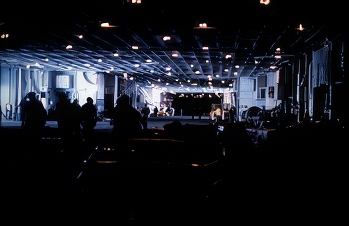
I remember standing watch on the USS Oriskany in Subic Bay, Philippines, at night on Christmas Eve as the CAG-30 duty officer, thinking about my family back in California. Someone had to do it, and it was me. When the hanger bay is empty, it’s a very lonely place.
What professional achievements are you most proud of from your military career?
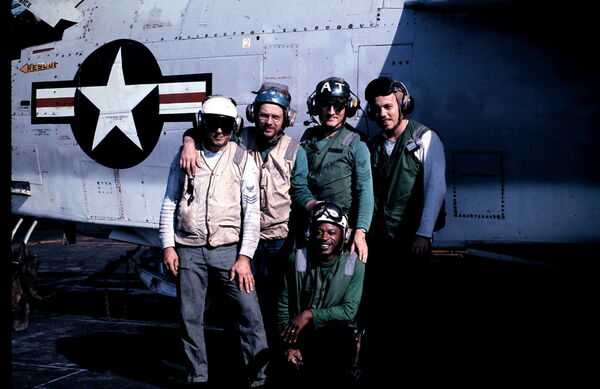
My service during the Vietnam War and doing the best I could for our Detachment and working hard and having fun with my shipmates. When assigned to DIA in Washington, D.C., I did my best to analyze what was given to me and produce products for the Cold War. Going into Reserve Duty after Active Duty was a challenge but still rewarding and extending my career until retirement, at 27 years.
Of all the medals, awards, formal presentations and qualification badges you received, or other memorabilia, which one is the most meaningful to you and why?
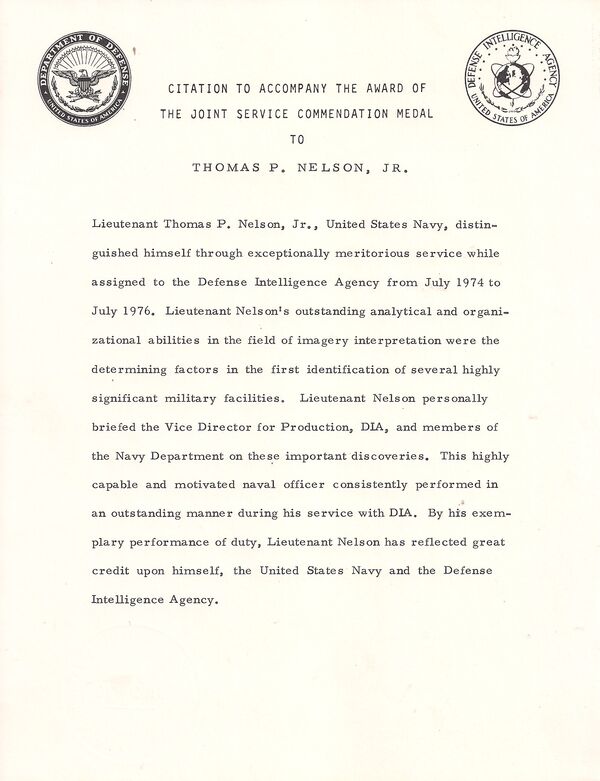
My Joint Service Commendation Medal at DIA was very meaningful. The DIA assignment, highly classified, gave me opportunities to contribute new ideas and see the results. The opportunities to travel for meetings and training continued a lot while assigned.
Which individual(s) from your time in the military stand out as having the most positive impact on you and why?
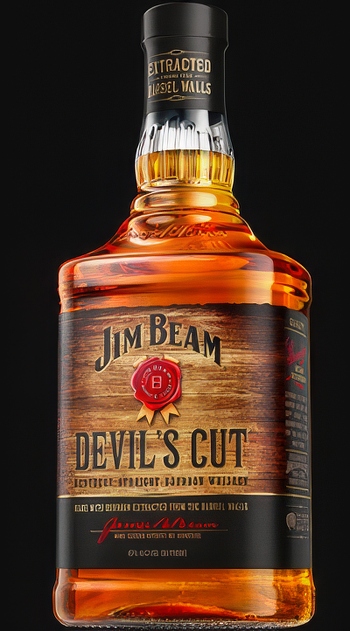
I particularly had an impact from the VFP-63 Detachment, ONC, LCDR David Mitchell Beam, during my Vietnam tour. He was a great leader who I respected for his decision and caring for the shipmates.
When in Japan, we had patches made “Beam’s Best,” a reflected pattern that of the Jim Beam booze bottle. He once took the officers to a small government island (Grande Island) in Subic Bay for some R&R. The times the officers went to his cabin on the Oriskany for “medicinal gathering,” and dice games were fun. His wife Ann and my wife hit it off back home to support each other during our deployment.
List the names of old friends you served with, at which locations, and recount what you remember most about them. Indicate those you are already in touch with and those you would like to make contact with.

While assigned to VFP-63, waiting for deployment on the USS Oriskany (CVA-34), the squadron assigned me to the NAS Miramar Photo Laboratory. There I assisted the squadron in developing target packages for anyone needing imagery of West Coast bombing ranges. The enlisted men (PTC Thompson, PT1 Roe, PT3 Buxton, and PT3 Abord) worked to develop an efficient means to reproduce numerous targeting packages. The pilot training on the squadron’s RF8G reconnaissance aircraft would be briefed on the detailed images needed to create the bombing packages.
On one occasion, we deployed to the Anza Borrego Desert State Park in California to work with a state archaeologist attempting to see what a planned state highway might impact the local Indian historic sites. The squadron aircraft on training missions flew over this area providing detailed images of the area. Working with the state, we also were given the benefit of learning the truth. Ancient Indian trials were still evident in the present-day images.
Governor Reagan, the future President, sent to the squadron a letter of appreciation for our effort. Another team effort was to join a National Guard unit near China Lake to participate in Blue-Red tank training exercises. Riding along in their tanks enhanced our perspective of ground vs. air observations. I was also used to grade other RF8G Detachments for Combat Air Wings off the coast of California as preparations were underway for Vietnam deployments.
Can you recount a particular incident from your service which may or may not have been funny at the time but still makes you laugh?
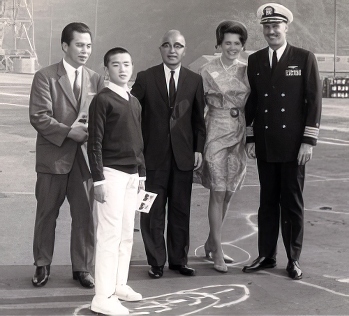
When the carrier Oriskany was drydocked in Yokosuka, Japan, I took the opportunity to visit RADM Sadao Chigusa in Zushi-City, Japan. A retired Naval Captain in Escondido, California, provided me with the contact. As we sat on the floor, I was invited to dinner, a traditional one of multiple sources, served by Mrs. Chigusa. Traveling back to the carrier, I asked CAPTAIN Barrow, Commanding Officer of the Oriskany, if RADM Chigusa could be invited to our ship. RADM Chigusa accepted the invitation and came with his son and nephew. RADM Chigusa was piped aboard. Mrs. Barrow was visiting Japan and joined us for lunch in the CAPTAIN’s wardroom, then a ship tour. The Chigusa then asked the Barrows and me for dinner in their home. I again returned to the Chigusa home in Zushi-CIty. By the way, RADM Chigusa’s diary was used in the film “Tora, Tora, Tora” as he was a gunner officer when the Japanese fleet traveled to Hawaii. He also had a gun turret used in the Battle of the Coral Sea. When he became part of the Japanese Defense Force and obtained the rank of Rear Admiral, he met a great number of American officers, as shown to me in his photo album.
While on the USS Oriskany, there were times we saw the junior officer tricked, such as the “Mail buoy Watch,” where the person was sent to the bow to watch for any floating buoy containing mail. Or another, we would send junior officers to obtain the best chick flick (16mm) on the ship, even if we had seen it many times. Another was where the officer was sent for a particular color of cake icing, which didn’t exist. Another was the ticker-tape logs to have the XO of the ship sign-off on.
What profession did you follow after your military service, and what are you doing now? If you are currently serving, what is your present occupational specialty?

I was civil service at DIA at the same desk I left after active duty. For a total of 32 years with combined service, I worked for DIA then the Army INSCOM in Charlottesville, Virginia, with FSTC (to become NGIC). Retiring from civil service at NGIC, I became a contractor for different companies. I am retired now in Roseland, Virginia, doing what I want, such as golf.
What military associations are you a member of, if any? What specific benefits do you derive from your memberships?
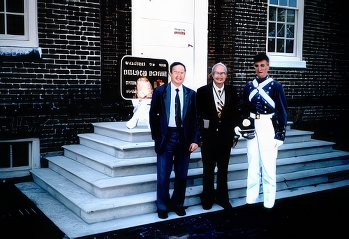
I joined the American Legion Post 17 in Shipman, Virginia, and attended monthly meetings. The affiliation provides me access to other retired military and representing the service so others may follow.
I also am a member of the National Society of the Sons of the American Revolution (SAR) as my 4th great-grandfather is Major General & Governor (of Virginia) Thomas Nelson, Jr. My affiliation allows me to represent directly the great accomplishments he provided to include the signing of the Declaration of Independence.
I am a member of the Private Napoleon Bonaparte Ponton Camp 2179, Sons of Confederate Veterans, representing Private Hugh Thomas Nelson, Sr., of the Morris Light Artillery Hanover, Virginia. Two of my forefathers served in the War Between the State. I want to remember the service of my ancestors.
I joined the Descendants of the Signers of the Declaration of Independence (DSDI) in 2017 as I am a direct descendant of Thomas Nelson, Jr., a signer. I benefit by wanting to remind Americans of the great cost it took for establishing America.
In what ways has serving in the military influenced the way you have approached your life and your career? What do you miss most about your time in the service?

My goal in life was to become an aviator with the Air Force, but that changed to one in the Navy. The respect for seniors was how I was brought up. My Christian lifestyle is extremely important to me in setting an example to others regarding my relationship with Jesus Christ. The commanders I respect most are those who have a spiritual glow around them, and I know I trust them with my life. I miss most the uniform and what it stands for.
Based on your own experiences, what advice would you give to those who have recently joined the Navy?
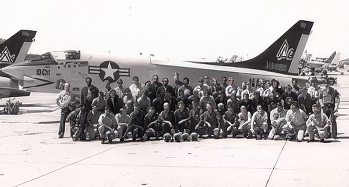
Work as hard as you can but receive guidance from the Lord. He lets your heart know what is true. Please keep copies of everything with your name on it. Don’t ever lose your DD214 at the end of service. Keep all orders stashed away for your grandchildren. Keep a diary. Always use the words “Yes, Sir” and “No, Sir.” If you don’t know the answer let the questioner know you will find it.
Open car doors for ladies as they may become your spouse. When you have children, if you do, discipline is necessary throughout life as well as love. Take time to enjoy military life and have fun. Don’t get drunk. Watch your finances, putting some away for a rainy day. You are who your friends are is a saying the think about. You will become like them. Say prayers at any time.
In what ways has togetherweserved.com helped you remember your military service and the friends you served with.
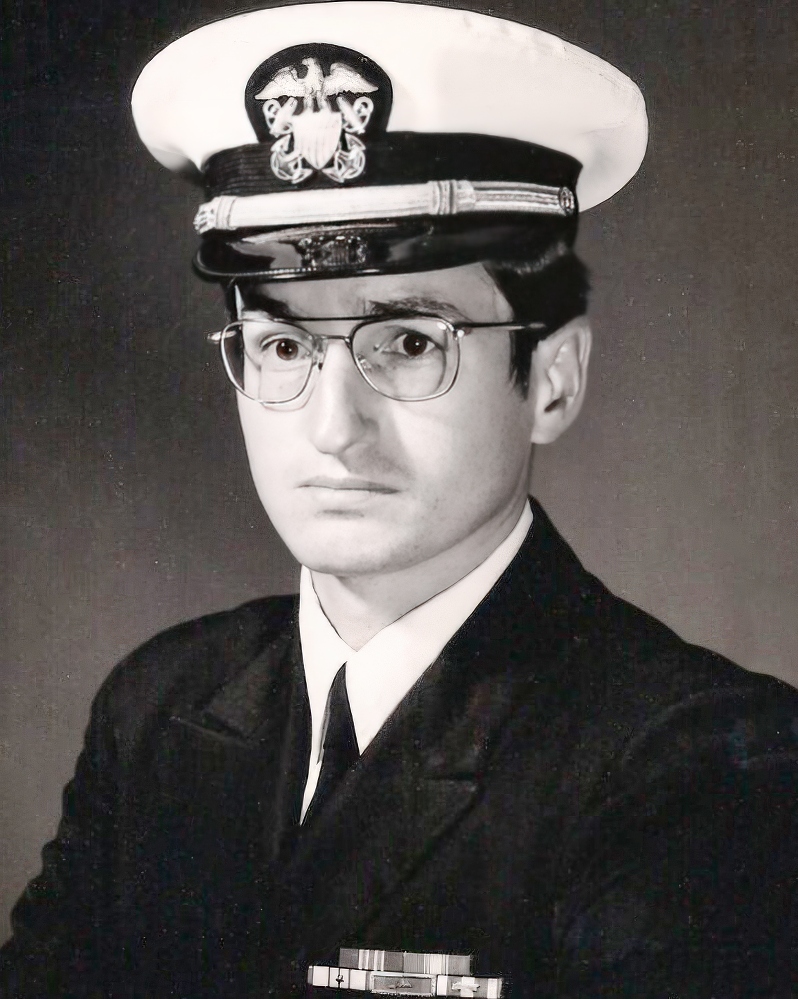
Together We Served has helped me remember the past. A good number of years have passed, but I can still picture my life in the service. Thank you, TogetherWeServed.com.
PRESERVE YOUR OWN SERVICE MEMORIES!
Boot Camp, Units, Combat Operations
Join Togetherweserved.com to Create a Legacy of Your Service
U.S. Marine Corps, U.S. Navy, U.S. Air Force, U.S. Army, U.S. Coast Guard
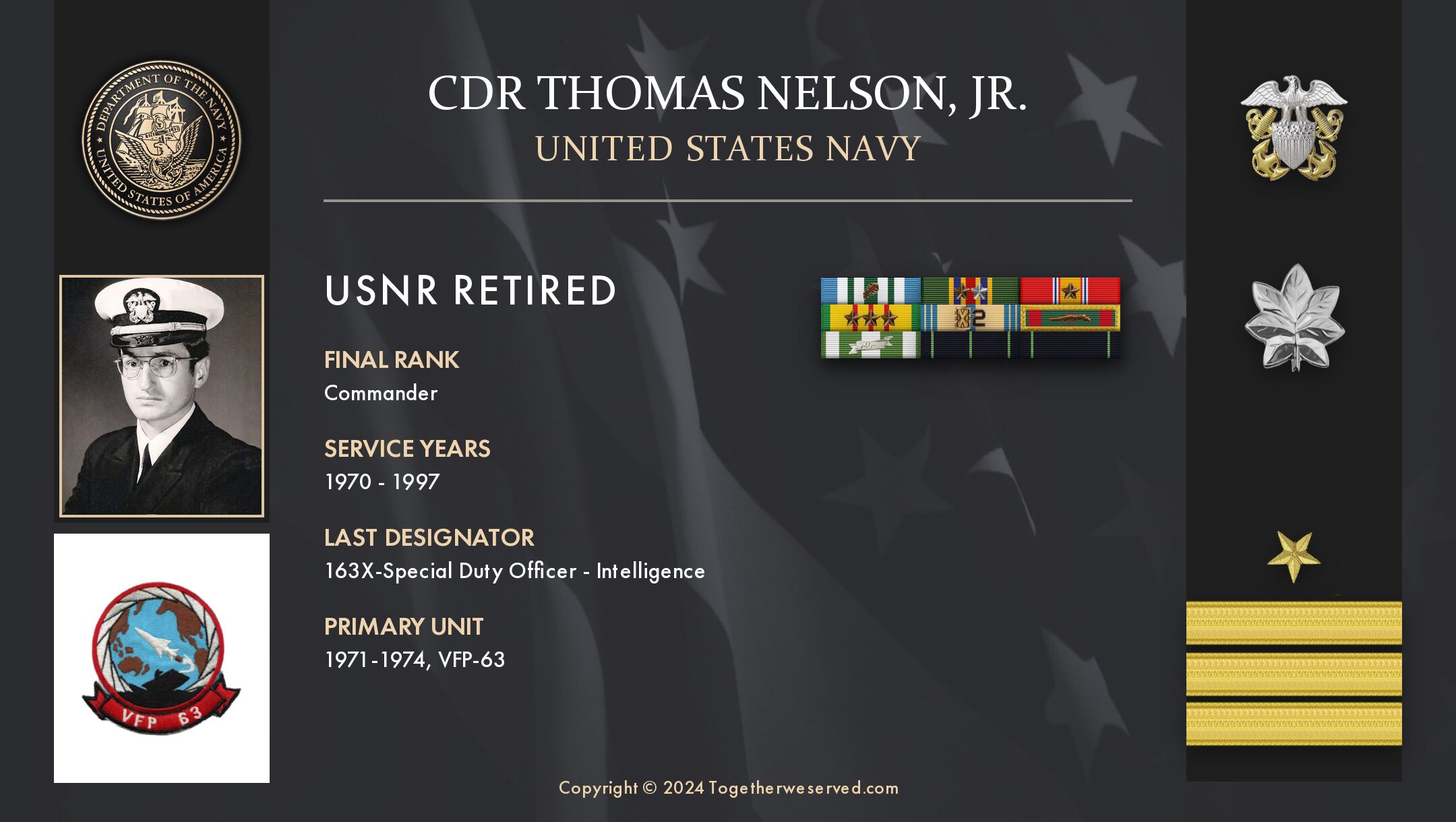
0 Comments